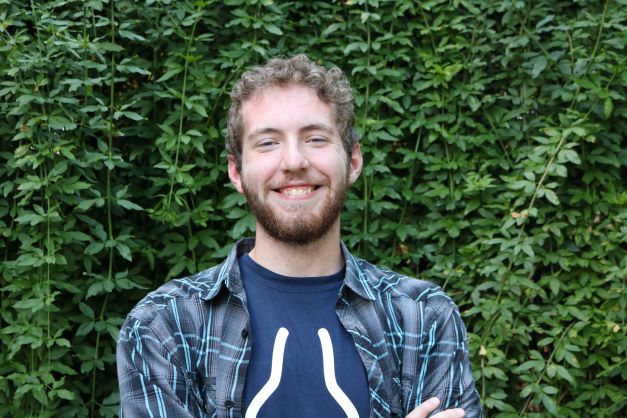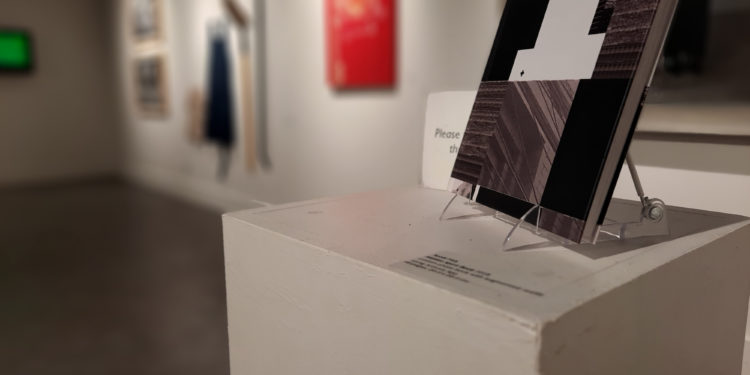This month, Samford’s Art Gallery has been hosting a travelling art exhibit called “Matter and Spirit.” Sponsored by the Nagel Institute, the exhibit features artwork from 10 American and 10 Chinese artists who were brought together on a 20 day trip to China in the summer of 2018. Among them was Samford’s Professor Scott Fisk, Professor and Chair of the Department of Art and Design. During their trip, the group discussed faith, education, and art, went to galleries, museums, temples and churches, and learned a lot about and from one another. The culmination of this shared experience is the art show that’s currently on display.
Fisk explained how he first got involved with the show, describing how he applied, along with a slew of other artists from across the states, for the program. He submitted materials as part of the process, and out of the many who applied, only 10 were ultimately selected, including himself. After that, he continued, it was quite an effort to go through the Visa process. The group actually outsourced that to a private company, who made sure they “dotted all of their I’s and crossed all of their T’s,” Fisk said. The whole group was on pins and needles, he said, to see if they were going to be able to go, which luckily they were. The next couple weeks were full of very long days, from sunup to sun down, during which the group spent visiting different destinations, talking about art, history and faith in China, comparing the art aesthetics in the U.S. and how it compared to China, and more.
When describing some of the differences he saw between art in America and the art he saw in China, Fisk noted he doesn’t consider himself an expert in Chinese art at all, so it’s just his opinion, and some might not agree. With that, he explained a lot of the traditional art that is taught in China seems based in the Western tradition, similar to Renaissance European artwork.
“They’re trained to be beautiful creators that make these masterpieces that look fairly realistic,” Fisk said. In America, by contrast, Fisk said that although there is some of that, “we also have a lot of artists that really believe in putting the concept first.”
In America, he believes, artists are very mixed with what they do and create, and are taught in a very diverse set of mediums from the beginning. In China, he said, at least in the educational systems that are set up, which are paid for and sponsored by the Chinese government, they are very rooted in “beautiful, realistic painting and drawing.”
While they do a lot of conceptual based work in China too, Fisk said there’s not as much of it because painting and drawing in traditional Western form is focused on starting at a young age, rather than a medium like sculpture, for example.
“It’s there, but not as much as in America,” he said.
Fisk’s favorite thing about the exhibit is that diversity in form, with so many different mediums being featured, be it sculpture, painting, drawing, etc.
“Just everything you can imagine is really represented in there,” he said “And just the memories that were made were phenomenal. It was a great experience.”
Fisk described the exhibit as “an awesome show.”
“I’m really proud of all of the different artists that are in it, and proud to be part of it,” he said.
As part of his contribution to the show, he put together the interactive “Hidden Spirit Book.” It uses a free augmented reality app called Artivive to “descramble” the book and show the photographs and videos hidden inside of it. Elaborating on what he finds interesting about augmented reality, Fisk said he believes it’s going to “take off because you can take anything and add another level of information to it,” such as a building you look at, for example.
“It could literally have a person pop up on the screen and tell you about it,” Fisk said.
The thematic idea of different levels hiding under the surface feeds into the artwork he created, since, while on the trip, he noticed two different levels of information in China. There’s the superficial tourist level, but then, when digging a little bit deeper, there’s what Fisk described as “a lot of undercurrents,” like the people there who are going to home churches, which are illegal. To him, the book represents that “sort of abstraction in communication.”
Going further into detail on the topic of China and Christianity, he noted Christianity in China is “growing by leaps and bounds” right now, and while they aren’t stopping people from worshipping, there is restriction in the number of churches that are there and the ones that are sanctioned.
“And it seems like the more they really try to restrict Christianity, the more home churches pop up and the more growth there is,” he said.
The percentage of the population that’s Christian is much smaller than here in America, but given China’s large population, it’s still a large number of people, and Fisk said, “it’s estimated that China will have more Christians in the next ten years than we have in America.”
Fisk said he hopes that people are inspired by the beauty of the work on display, and walk away with the fact that God is the greatest creator of all, the master creator, and since we are made in God’s image, we are naturally creators, too. He said he thinks this work is “a beautiful representation of God’s beautiful creations, and us.”
The exhibit is up through Oct. 7 in Swearingen Hall’s Art Gallery, and is free. To read more about the gallery, check out the article on the “Matter and Spirit” exhibit in this week’s edition of the Crimson.

Contributing Writer





